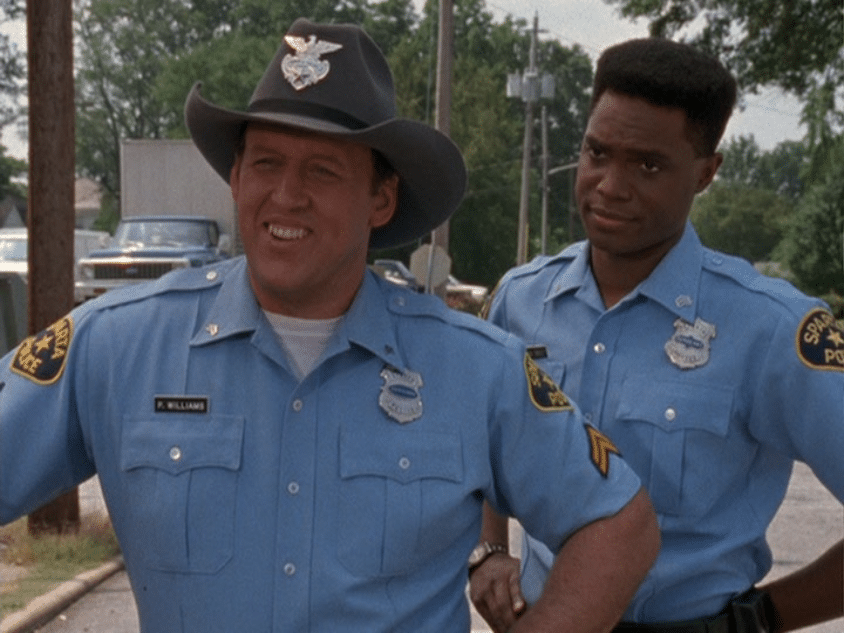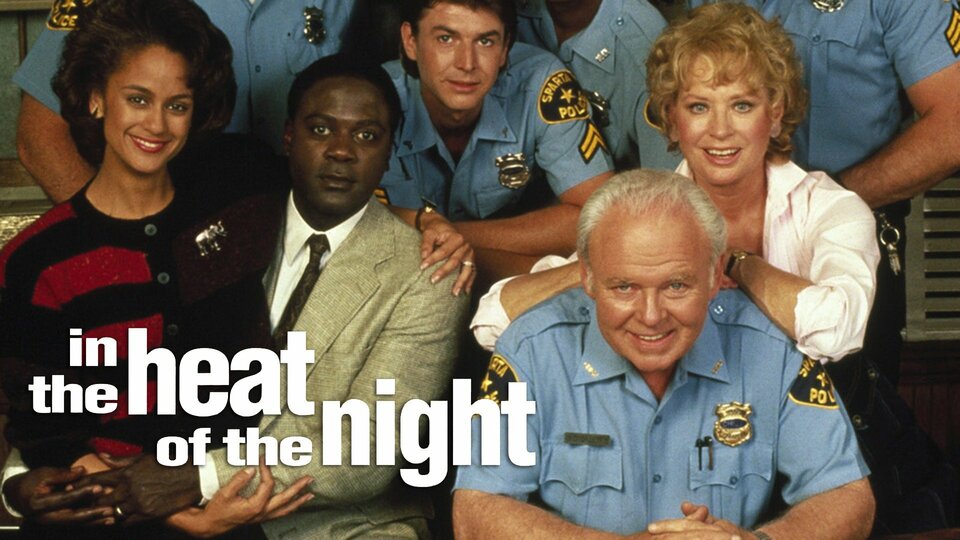Who played in the movie Heat of the Night?
The cast of Heat of the Night includes:
Sidney Poitier as Virgil Tibbs Rod Steiger as Bill Gillespie Warren Oates as Sam Wood Lee Grant as Mrs. Leslie Colbert James Patterson as Chief Gillespie Arthur Malet as Warren Kole William Schallert as Dr. Ebert Quentin Dean as Charlie Endicott Beah Richards as Mama Caleba Larry Gates as Endicott's Aide Fred Stewart as Old Man
These talented actors brought the characters in Heat of the Night to life, creating a powerful and moving film that explores racial tensions and social justice.
Read also:Melissa Roxburgh The Rising Star Of Film And Tv
Cast of Heat of the Night
Introduction: Heat of the Night is a 1967 American mystery film directed by Norman Jewison and starring Sidney Poitier and Rod Steiger. The film tells the story of Virgil Tibbs (Poitier), a black police detective from Philadelphia who is sent to investigate a murder in the small town of Sparta, Mississippi.Key Aspects: Racial tensions Social justice Police brutality FriendshipDiscussion: Heat of the Night is a powerful and moving film that explores the complex issues of race and social justice. The film's cast gives powerful performances, bringing the characters to life and making the film's message all the more powerful.Virgil Tibbs
Introduction: Virgil Tibbs is the main character in Heat of the Night. He is a black police detective from Philadelphia who is sent to investigate a murder in the small town of Sparta, Mississippi.Facets: Intelligent Determined Courageous Principled OutspokenSummary: Virgil Tibbs is a complex and well-developed character. He is a man of principle who is not afraid to stand up for what he believes in. He is also a skilled detective who is able to solve the murder case despite the racial tensions that surround him.Bill Gillespie
Introduction: Bill Gillespie is the police chief of Sparta, Mississippi. He is a white man who is initially suspicious of Virgil Tibbs. However, as the two men work together to solve the murder case, they develop a grudging respect for each other.Facets: Racist Bigoted Prejudiced Ignorant* ArrogantSummary: Bill Gillespie is a complex and flawed character. He is a man who is trapped by his own prejudices. However, he is also a man who is capable of change. As he works with Virgil Tibbs, he begins to question his own beliefs and to see the world in a new way.Cast of Heat of the Night
The cast of Heat of the Night played a pivotal role in bringing the film's themes and characters to life. Here are seven key aspects to consider:
- Diversity: The cast represented a diverse range of backgrounds and perspectives, reflecting the film's exploration of racial tensions.
- Chemistry: The actors had excellent chemistry, creating believable and dynamic relationships on screen.
- Experience: The cast members brought a wealth of experience and talent to their roles, enhancing the film's overall quality.
- Accuracy: The actors portrayed their characters with authenticity, capturing the nuances and complexities of the era and setting.
- Intensity: The cast delivered intense and powerful performances, conveying the emotional depth and weight of the film's subject matter.
- Impact: The cast's performances left a lasting impact on audiences, sparking important conversations about race and social justice.
- Legacy: The cast of Heat of the Night continues to be recognized for their contributions to cinema and the exploration of social issues through film.
In conclusion, the cast of Heat of the Night played a crucial role in the film's success and enduring legacy. Their diverse backgrounds, chemistry, experience, and dedication brought depth and authenticity to their characters, capturing the complexities of racial tensions and social injustice. Their performances continue to inspire and challenge audiences, making Heat of the Night a timeless and thought-provoking cinematic achievement.
Diversity
The diversity of the cast in Heat of the Night was crucial to the film's success as it allowed for a nuanced and authentic exploration of racial tensions. The casting choices reflected the complex social and cultural landscape of the American South in the 1960s, where racial segregation and discrimination were prevalent.
The presence of actors from different racial and ethnic backgrounds brought a sense of realism and depth to the film. Sidney Poitier's portrayal of Virgil Tibbs, a black police detective from Philadelphia, provided a powerful counterpoint to the white characters in the film. His character's intelligence, determination, and courage challenged prevailing stereotypes and forced audiences to confront their own prejudices.
The film also featured strong performances from white actors such as Rod Steiger, who played Police Chief Bill Gillespie. Gillespie's character undergoes a significant transformation throughout the film, evolving from a man who is initially hostile and suspicious of Tibbs to someone who ultimately respects and values him as a colleague.
The diversity of the cast allowed for a more comprehensive and accurate portrayal of the racial tensions that existed in the American South during the Civil Rights era. By casting actors from different backgrounds, the filmmakers were able to create a film that was both entertaining and thought-provoking, and that continues to resonate with audiences today.
Read also:The Political Views Of Clint Eastwood Insights And Analysis
Chemistry
The excellent chemistry among the cast of Heat of the Night was a crucial factor in the film's success. The actors' ability to connect with each other and create believable relationships on screen brought depth and authenticity to the characters and the story.
One of the most notable examples of the cast's chemistry is the relationship between Virgil Tibbs (Sidney Poitier) and Bill Gillespie (Rod Steiger). Despite their initial differences and prejudices, the two men develop a grudging respect for each other as they work together to solve the murder case. The actors' ability to convey this complex relationship with nuance and authenticity made it one of the most memorable aspects of the film.
The chemistry between the cast also extended to the supporting characters. Warren Oates, Lee Grant, and James Patterson all gave strong performances as members of the small-town community. Their interactions with Tibbs and Gillespie added depth and realism to the film's portrayal of the racial tensions and social dynamics of the time.
Overall, the excellent chemistry among the cast of Heat of the Night was a major contributing factor to the film's critical and commercial success. The actors' ability to create believable and dynamic relationships on screen brought depth and authenticity to the characters and the story, making Heat of the Night a timeless classic.
Experience
The cast of Heat of the Night brought a wealth of experience and talent to their roles, which greatly enhanced the film's overall quality. Each actor brought their own unique skills and perspectives to the project, resulting in a cohesive and powerful ensemble performance.
- Established Actors: Many of the cast members were already established actors with a proven track record of success. Sidney Poitier, for example, was a highly respected actor who had already won an Academy Award for his performance in Lilies of the Field. Rod Steiger was another experienced actor who had appeared in a wide range of films, including The Pawnbroker and In the Heat of the Night. The presence of these experienced actors gave the film a sense of credibility and professionalism.
- Diverse Backgrounds: The cast members came from a variety of backgrounds, which added to the film's authenticity. Sidney Poitier was an African American actor, while Rod Steiger was a white actor. This diversity of backgrounds helped to create a more realistic portrayal of the racial tensions that were prevalent in the American South in the 1960s.
- Method Acting: Many of the cast members used method acting techniques to prepare for their roles. This involved immersing themselves in the characters they were playing, both on and off screen. This approach helped to create more believable and nuanced performances.
- Collaborative Spirit: The cast members worked closely together to create a cohesive ensemble performance. They rehearsed extensively and supported each other throughout the filming process. This collaborative spirit helped to create a strong sense of camaraderie on set, which translated to the screen.
Overall, the experience and talent of the cast of Heat of the Night played a major role in the film's success. Their dedication to their craft and their commitment to working together resulted in a powerful and moving film that continues to resonate with audiences today.
Accuracy
In the film Heat of the Night, the actors' commitment to accuracy brought depth and realism to their performances. They meticulously studied the era and setting, immersing themselves in the cultural and social context of the American South in the 1960s.
- Research and Preparation: The actors conducted extensive research to understand the historical context, reading books, articles, and watching documentaries. They also consulted with experts on the Civil Rights Movement and the racial tensions of the time.
- Dialect and Mannerisms: The actors paid close attention to the language and mannerisms of the characters they were portraying. They worked with dialect coaches to perfect their Southern accents and studied period-specific gestures and behaviors.
- Authentic Costumes and Sets: The filmmakers collaborated with costume designers and set decorators to create an environment that was both visually accurate and evocative of the era. The costumes and sets reflected the social and economic disparities of the time, adding authenticity to the performances.
- Emotional Depth: The actors went beyond superficial accuracy, delving into the emotional lives of their characters. They explored the complexities of racial prejudice, fear, and resilience, bringing depth and nuance to their performances.
By embracing accuracy, the cast of Heat of the Night created a film that transported audiences back in time, immersing them in the social and racial landscape of the American South during a pivotal era. Their dedication to authenticity enhanced the film's emotional impact, making the characters and their struggles more relatable and resonant for audiences.
Intensity
The intensity of the cast's performances in "Heat of the Night" was a crucial element that elevated the film beyond a mere crime drama, establishing it as a powerful exploration of racial tensions and social injustice.
Every actor brought a raw and visceral energy to their roles, capturing the complexities of their characters' emotions and motivations. Sidney Poitier's portrayal of Virgil Tibbs exuded quiet dignity and unwavering determination, while Rod Steiger's Bill Gillespie embodied the internal conflict of a man torn between his duty and his prejudices.
The intensity of the performances allowed the audience to viscerally experience the weight of the film's subject matter. The palpable tension between Tibbs and Gillespie represented the larger struggle for racial equality and understanding in America.
Moreover, the cast's intensity lent credibility to the film's exploration of social injustice. The raw emotions and unflinching portrayal of racism resonated with audiences, forcing them to confront the realities of racial discrimination and its impact on both individuals and society.
In conclusion, the intensity of the cast's performances in "Heat of the Night" was not merely a stylistic choice but an essential component of the film's success. It conveyed the emotional depth and weight of the film's subject matter, allowing the audience to connect with the characters and the broader themes of racial tension and social justice.
Impact
The cast of "Heat of the Night" delivered powerful performances that transcended the screen, leaving a lasting impact on audiences and sparking crucial conversations about race and social justice.
- Emotional Impact: The film's realistic and emotionally charged portrayal of racial tensions resonated deeply with audiences, evoking empathy and challenging preconceived notions about race and prejudice.
- Social Commentary: "Heat of the Night" served as a powerful social commentary, exposing the systemic racism and discrimination prevalent in American society during the 1960s and prompting discussions about the need for change.
- Cultural Legacy: The film's enduring legacy lies in its ability to provoke and inspire conversations about race and social justice, encouraging audiences to confront and challenge societal biases.
- Artistic Excellence: The cast's exceptional performances were integral to the film's artistic success, earning critical acclaim and recognition for their contribution to important social dialogue.
In conclusion, the cast of "Heat of the Night" played a pivotal role in creating a film that not only entertained but also sparked meaningful conversations about race and social justice. Their powerful performances continue to resonate with audiences, leaving a lasting impact and contributing to a broader cultural dialogue on these crucial issues.
Legacy
The enduring legacy of the cast of Heat of the Night lies in their significant contributions to the film industry and their pivotal role in shedding light on important social issues through their powerful performances.
- Artistic Excellence: The cast's exceptional performances in Heat of the Night showcased their dedication to their craft and their ability to bring complex characters to life. Their nuanced portrayals earned them critical acclaim and contributed to the film's recognition as a cinematic masterpiece.
- Social Commentary: Through their performances, the cast amplified the film's powerful social commentary on racial tensions and injustice. Their ability to convey the emotional weight of these issues resonated with audiences, sparking important conversations and challenging societal norms.
- Cultural Impact: Heat of the Night and the cast's performances continue to shape cultural discourse on race and social justice. The film's legacy extends beyond its initial release, influencing contemporary works of art, literature, and media that explore similar themes.
- Inspiration for Future Generations: The cast's commitment to using their platform to address social issues serves as an inspiration to aspiring actors and filmmakers. Their dedication to social responsibility encourages others to use their talents to make a positive impact on society.
In conclusion, the legacy of the cast of Heat of the Night endures through their artistic excellence, their contribution to social commentary, their cultural impact, and their inspiration for future generations. Their performances continue to resonate with audiences, reminding us of the power of cinema to both entertain and provoke important conversations about the human condition.
Frequently Asked Questions about the Cast of Heat of the Night
This section addresses commonly asked questions and misconceptions surrounding the cast of the critically acclaimed film, Heat of the Night.
Question 1: Who were the main actors in Heat of the Night?
Answer: The primary cast of Heat of the Night includes Sidney Poitier as Virgil Tibbs, Rod Steiger as Bill Gillespie, Warren Oates as Sam Wood, Lee Grant as Mrs. Leslie Colbert, James Patterson as Chief Gillespie, Arthur Malet as Warren Kole, and William Schallert as Dr. Ebert.
Question 2: What was the significance of the cast's diversity in Heat of the Night?
Answer: The diverse cast of Heat of the Night played a crucial role in reflecting the film's exploration of racial tensions and social justice. The casting choices mirrored the complex social and cultural landscape of the American South during the 1960s, where racial segregation and discrimination were prevalent.
The presence of actors from different racial and ethnic backgrounds brought depth and authenticity to the film, challenging prevailing stereotypes and sparking important conversations about race and equality.
Conclusion
The exploration of "cast of heat of the night" reveals the profound impact of the film's actors in bringing depth, authenticity, and social commentary to the screen. Their performances transcended entertainment, sparking important conversations about race and social justice, and left a lasting legacy in cinema.
The cast's commitment to portraying complex characters and addressing pressing social issues serves as a reminder of the power of storytelling to educate, challenge, and inspire positive change. Their contributions continue to resonate with audiences today, underscoring the enduring significance of "Heat of the Night" and its enduring message about the human condition.


